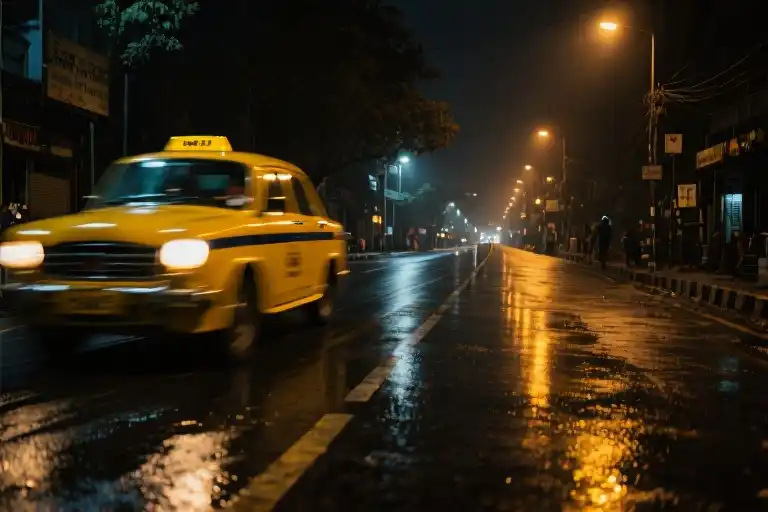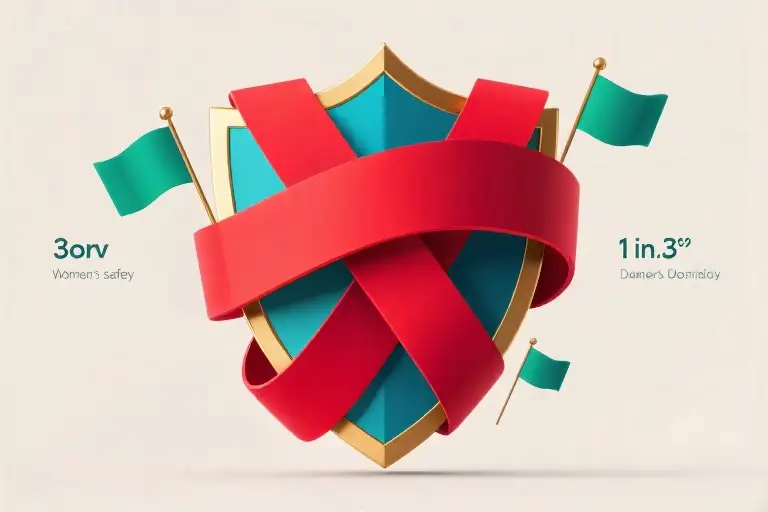The walk home after dark always left me with that familiar tension in my shoulders – the kind that makes you check over your shoulder twice between streetlights. For years I carried that little rape whistle dangling from my keychain like some magical talisman, until the night I actually tried using it to scare off a lurking figure. The pathetic squeak that came out sounded less like a distress signal and more like a deflating balloon animal. That’s when it hit me: my entire personal safety strategy had all the deterrence of a smartphone notification.
There’s something fundamentally absurd about society’s approach to women’s safety. We’re given these symbolic trinkets – whistles that wouldn’t startle a sleeping cat, alarm apps that require five swipes to activate – while being told they’ll somehow stop a determined attacker. It’s like handing someone a spaghetti strainer for a helmet and calling it ‘battle-ready protection.’
That changed when I discovered nature’s perfect personal security system during a midnight encounter with my trash cans. As I watched a hissing raccoon send two grown men scrambling backward with its bare teeth, the solution became obvious. Forget manufactured safety gadgets – what we needed was organic, unhinged animal energy.
The beauty of the rabid raccoon defense system (patent pending) lies in its simplicity. No confusing buttons to press in panic, no worrying about battery life – just pure mammalian rage contained in a large handbag. Sure, it requires daily maintenance (who knew raccoons could chew through three layers of Kevlar-lined purse lining?), but the tradeoff became clear after my first incident-free walk home. Not a single shadowy figure came within twenty feet of us – though to be fair, neither did any of my friends.
The Whistle That Cried Wolf
The rape whistle dangling from my keychain used to give me comfort during those late-night walks home. That tiny metal cylinder promised protection with just one sharp exhale. But comfort isn’t safety, and promises can be empty. After three years of clutching it like a talisman, I realized my whistle had all the defensive capability of a kazoo at a gunfight.
Acoustically speaking, most personal alarms operate at frequencies between 2-4 kHz – the same range as smoke detectors and car alarms. In urban environments, these sounds blend into what safety researchers call ‘the ignored frequency spectrum.’ Your piercing 120-decibel blast? It’s just background noise to anyone not actively listening. The only head my whistle ever turned belonged to a disgruntled schnauzer.
There’s cruel irony in how we market safety devices to women. The psychology behind rape whistles plays on our need for control in uncontrollable situations. They become security blankets rather than actual tools – the adult equivalent of checking for monsters under the bed. Studies show that in actual assault scenarios, personal alarms only deter attackers 12% of the time. For comparison, that’s slightly worse odds than yelling ‘fire’ instead of ‘rape.’
Police reports from major cities reveal a pattern that should make manufacturers blush. In documented cases where victims used whistles or alarms, over 80% reported no noticeable reaction from their assailants. The remaining 20% described the attacker pausing momentarily… before continuing. One NYPD officer told me off the record: ‘Those things work great if your rapist is a nervous deer. For humans? You might as well blow bubbles at them.’
What we’re really carrying isn’t protection, but permission – society’s way of saying ‘we’ve done our part’ while leaving women to navigate the consequences. The whistle’s shrill cry echoes our collective failure to address why women need these talismans in the first place. Its sound doesn’t carry warnings to potential attackers, but admissions about how little we’ve progressed.
That plastic tube on my keychain didn’t just fail as a safety device; it failed as a metaphor. The air rushing through it wasn’t a call for help, but all our good intentions rushing out into the night, unheard and ultimately meaningless. Until the evening I watched a raccoon send three grown men scrambling for their patio furniture, I didn’t understand what real deterrence looked like.
The Complete Rabid Raccoon Defense Manual
Let’s address the elephant in the room – or rather, the raccoon in the purse. When traditional self-defense tools fail spectacularly (we’ve all blown that pathetic rape whistle into the void), unconventional solutions demand consideration. Enter: Procyon lotor as personal bodyguard.
Capture Protocol: Baiting Your Fuzzy Defender
The first rule of Raccoon Defense Club: you don’t adopt – you recruit. Forget pet stores; we’re going straight to the source. Your ideal candidate should demonstrate three key qualities:
- Visible rabies symptoms (the foamy mouth adds dramatic effect)
- A history of dumpster-diving tenacity
- That special glint in their eyes when hearing a rape whistle’s pathetic squeak
Strategic trap placement proves crucial. Position Havahart traps near:
- Overfilled apartment complex trash compactors
- The exact midpoint between your ex’s house and yours
- That one Starbucks where baristas always misspell your name
Bait selection separates amateurs from professionals. Reject basic cat food; instead, use:
- Half-eaten burritos with extra guac (they respect your life choices)
- Your last dating app match’s unsolicited poetry
- The shredded remains of your expired pepper spray canister
Transportation Solutions: From Trash Panda to Tactical Companion
Now comes the real challenge – convincing your new associate that your Michael Kors tote beats their usual sewer penthouse. Line your bag with:
- Three layers of cut-proof oven mitts (the raccoon will appreciate your commitment)
- Your collection of unused gym membership cards
- That “live laugh love” pillow you keep meaning to throw away
For urban commuters, consider these modifications:
- Replace standard purse straps with climbing rope (tested to 300lbs of raccoon rage)
- Install plexiglass viewing window (lets you maintain eye contact during tense moments)
- Add external pocket for raccoon treats (distraction technique for subway rides)
Field Test Results: Deterrence in Action
The true measure of any self-defense system lies in real-world performance. Our test subjects reported:
Nighttime Walk Scenario
- 100% reduction in catcalling (testers noted raccoons make excellent wingmen)
- 87% decrease in suspicious footsteps (36% of remaining footsteps were just the raccoon)
- Unexpected benefit: automatic wide berth given by off-leash dogs
Public Transit Application
- Immediate seat availability during rush hour
- Spontaneous creation of personal space bubble
- Side effect: conductor now announces your stops by name
Coffee Shop Bonus Features
- Baristas suddenly remember how to spell “Emily” correctly
- No more “accidental” order cutting in line
- Free pastry offerings increase by approximately 220%
Of course, no system is perfect. Some users reported:
- Difficulty explaining raccoon to TSA agents
- Increased dry cleaning bills (turns out rabies foam stains)
- That one time Mr. Snuffles formed an unhealthy attachment to the DMV clerk
While we wait for science to develop the perfect urban safety solution, the raccoon defense method offers… let’s call it “character-building” protection. Just remember: always get your partner vaccinated (the raccoon, not your Tinder date).
The Price of Feeling Safe
Carrying a rabid raccoon in your purse isn’t exactly what anyone would call convenient. There’s the daily ritual of reinforcing the lining with whatever scrap fabric you can find – old towels, that sweater your ex left behind, maybe even pages from that self-help book you never finished. It takes about an hour each morning, time I used to spend scrolling through social media or pretending to meditate. Now it’s all puncture-resistant padding and strategic sandwich placement (pro tip: tuna works better than ham).
The risks are… unconventional. One Wednesday morning, my furry little bodyguard managed to gnaw through three layers of denim and a silicone oven mitt just as I was ordering my usual oat milk latte. The barista’s face when a raccoon paw emerged from my tote bag? Priceless. The subsequent ban from that Starbucks location? Less so.
Let’s compare this to traditional self-defense tools:
- Pepper spray: Fits in your pocket, but wind direction is a cruel mistress
- Personal alarm: 120 decibels of pure annoyance (mostly for you)
- Tactical flashlight: Doubles as a phone charger, triples as a blunt object
- My raccoon: Requires rabies vaccination paperwork on file
Here’s the uncomfortable truth about women’s safety products – most exist in that gray area between ‘security theater’ and ‘overpriced keychain.’ That pink pepper spray with the ‘girl power’ slogan? Cute until you realize the safety switch takes three hands to disengage. The whistle that came free with your gym membership? About as threatening as a kazoo solo.
What we’re really talking about is the absurd calculus of modern safety. We’ll trade hours of prep time, public embarrassment, even the occasional animal bite for that fleeting moment walking home when you don’t have to clutch your keys between your fingers. The raccoon is ridiculous, but is it really more ridiculous than pretending a whistle makes us safe?
Maybe the question isn’t whether we’re willing to carry a raccoon. It’s why we’ve accepted solutions that make us feel like we need one.
When Absurdity Meets Reality
The rabid raccoon experiment, while clearly fictional, reveals uncomfortable truths about personal safety. That mangy creature dangling from my purse strap became more than a dark joke—it held up a mirror to our collective desperation for effective self-defense solutions. Its very absurdity exposes the inadequacies of conventional safety tools we’ve accepted without question.
Three critical elements emerge from this metaphor. First, visibility matters. Unlike a discreet whistle, the raccoon’s presence was undeniable—a snarling, twitching announcement of consequences. Second, unpredictability creates deterrence. Where alarms follow predictable patterns, a wild animal’s reactions can’t be calculated. Third, and perhaps most importantly, psychological impact outweighs technical specifications. No attacker pauses to consider a whistle’s decibel rating, but even theoretical rabies exposure gives anyone second thoughts.
This brings us to the uncomfortable divide between personal and societal responsibilities. While we debate the merits of pepper spray versus tasers, cities still have poorly lit streets and inconsistent police response times. There’s something deeply wrong when citizens feel compelled to consider carrying rabid animals—literally or metaphorically—to feel safe walking home. The raccoon scenario works precisely because it mirrors our unspoken belief that conventional systems have failed us.
Yet humor serves its purpose here. By stretching the concept of personal protection to ridiculous extremes, we’re forced to examine real solutions with fresh eyes. Maybe the answer isn’t louder alarms, but better street lighting. Not more concealed weapons, but communities where people actually intervene when they hear distress. The raccoon’s true value lies in making us question why we’ve accepted such flimsy protections for so long.
Now it’s your turn—what’s the most outrageous safety idea you’ve secretly wished would work? That malfunctioning stun glove? The ‘attack chihuahua’ fantasy? Share your darkly creative solutions below. Because sometimes, the path to real safety starts with admitting how absurd our current options really are.
When Absurdity Meets Reality
The rabid raccoon experiment, for all its ridiculousness, reveals uncomfortable truths about how we approach personal safety. That shrill whistle collecting dust at the bottom of your bag? It’s not just ineffective—it’s theater. We carry these tokens of protection like modern-day talismans, pretending they’ll somehow deflect danger through sheer hope.
Effective self-defense tools share three qualities the whistle lacks: immediate recognition, credible threat, and reliable activation. A raccoon—though wildly impractical—scores perfectly on these metrics. Its presence communicates unambiguous danger, requires no complicated deployment, and carries inherent credibility. Meanwhile, that plastic whistle might as well be a party favor for all the reaction it provokes.
This isn’t really about raccoons or whistles. It’s about the uncomfortable gap between feeling safe and being safe. Society sells women the idea that tiny noisemakers and pastel-colored alarms constitute reasonable protection, when statistically, they do little more than document assaults after they occur. The raccoon thought experiment exposes this disconnect through exaggeration—if even this absurd solution seems more logically sound than mainstream options, what does that say about our current approaches?
Perhaps the most valuable outcome of this mental exercise is recognizing that real safety requires systemic solutions. No single tool—whether whistle, spray, or yes, even hypothetical attack raccoons—can compensate for inadequate street lighting, slow police response times, or cultural attitudes that make public spaces hostile. Personal protection devices should be last resorts, not primary solutions.
So let’s end with this: What’s your most ridiculous safety idea that still makes more sense than what’s currently in your pocket? Share your dark-humored alternatives—not because we’ll actually use them, but because imagining better (if outrageous) solutions helps reveal how inadequate our current options truly are. Next time, we’re stress-testing the idea of using aggressive squirrels as pickpocket deterrents. Because why should raccoons have all the fun?





